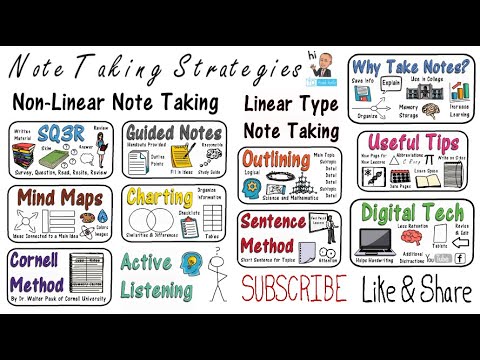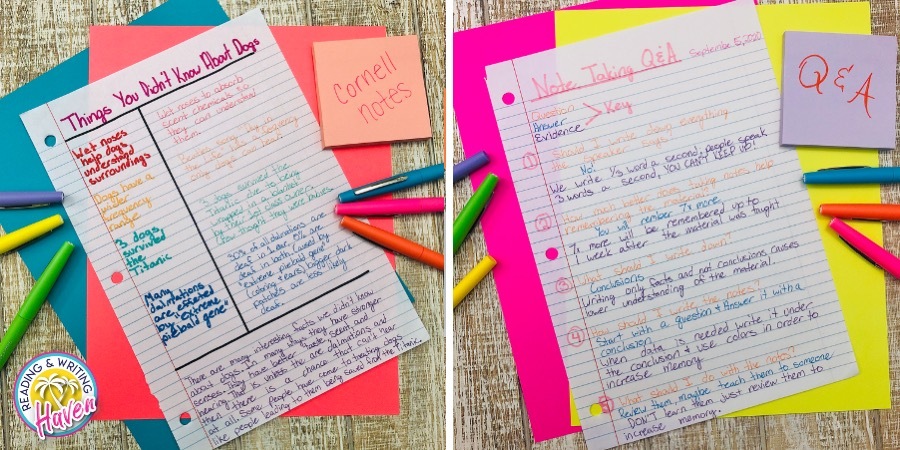Unlocking Effective Note-Taking Techniques For Students: How Do You Teach Them?
Taking Notes: Crash Course Study Skills #1
Keywords searched by users: How do you teach students to take good notes how to teach note taking skills to elementary students, how to teach note-taking to middle school, 8 tips for taking good notes, List 8 Tips for taking good notes, teaching note-taking to high school students, How to take note effectively, How important is note taking, how to make notes for teaching
What Is The Best Way For Students To Take Notes?
The most effective approach for students to take notes involves several key strategies. Firstly, it’s crucial to focus on recording key facts and essential information. If your teacher provides visual aids or writes important points on the board, take advantage of this opportunity and make sure to copy them down. However, it’s important not to go overboard. Trying to transcribe every word spoken in class can be overwhelming and counterproductive. Instead, aim to strike a balance by capturing the most significant details.
Additionally, don’t hesitate to ask for clarification or elaboration on any points that may be unclear. Engaging with the material in this way can lead to a deeper understanding. Furthermore, consider comparing your notes with those of classmates. This can provide different perspectives and help fill in any gaps in your own understanding.
Lastly, after the class session, take some time to review and organize your notes. This step is crucial for retention and will make studying for exams much more effective. By employing these comprehensive note-taking strategies, students can enhance their learning experience and excel in their studies.
What Are Three Strategies You Can Use To Take Better Notes?
What are three effective strategies for enhancing your note-taking skills? First, eliminate superfluous words such as “the” or “a” from your notes, as they don’t contribute meaningful information to the lecture content. Second, ensure you retain any critical technical or discipline-specific terms used by the lecturer. Third, when jotting down your notes, rephrase the information in your own words. This approach aids comprehension and boosts your ability to recall the material later. This advice holds true as of March 25, 2022.
What Are Note-Taking Techniques?
Note-taking techniques are a set of strategies and methods used to capture and organize information effectively. These techniques are valuable when attending lectures, reading textbooks, conducting research, or engaging in any activity where information needs to be retained for future reference. Note-taking encompasses various approaches, such as:
-
Taking notes from speech: This involves jotting down key points, ideas, and important details while listening to a speaker or during a discussion.
-
Mind maps: A visual technique that uses diagrams to represent concepts and their relationships, helping to visualize and connect information.
-
Line diagrams and system maps: Diagrams that illustrate processes, systems, or hierarchies to make complex information easier to understand.
-
Index cards: Small, portable cards that can be used for jotting down concise notes, facts, or key terms for quick reference.
-
Tables: Structured grids used to organize data, comparisons, or lists in a systematic and easily digestible format.
-
Using abbreviations: Employing shorthand or abbreviations to quickly capture information without sacrificing comprehension.
-
Highlighting and annotating: Marking important sections of text with colors or annotations to emphasize key points or add personal insights.
These note-taking techniques are versatile and can be adapted to suit individual preferences and the specific nature of the information being recorded. Effective note-taking can enhance understanding, retention, and recall of information, making it a valuable skill for students, professionals, and anyone seeking to learn and remember new material.
Summary 46 How do you teach students to take good notes





Categories: Update 13 How Do You Teach Students To Take Good Notes
See more here: future-user.com

Skip words like “the” and “a” that don’t add additional meaning to the lecture content. Retain key technical or discipline-specific terms. Take notes in your own words. Paraphrase what you hear so it makes sense to you—it helps you to understand and remember what you hear.
- Paraphrase information. …
- Separate main ideas from details. …
- Don’t worry about complete sentences. …
- Ensure notes are correct before studying them. …
- Do include diagrams and bullet points. …
- Ensure handwritten text is easy to read. …
- Keep notes organized in a binder or folder. …
- Combine facts with opinion.
- Write down key facts. If you have a teacher who writes notes on the board, that’s a bonus: You can copy them down. …
- Don’t overdo it. Don’t go crazy taking notes, though: You’ll be frantic if you try to write down every word that’s said in class. …
- Ask. …
- Compare. …
- Copy. …
- Organize.
Learn more about the topic How do you teach students to take good notes.
- Note-taking skills for kids and how to teach them
- Note-Taking Tips (for Teens) – Nemours KidsHealth
- Techniques and Tips for Listening and Note Taking
- Note-taking techniques | Help Centre – The Open University
- Note-taking – Wikipedia
- How to Take Effective Notes – Randolph-Macon College
See more: future-user.com/your-money
Trả lời